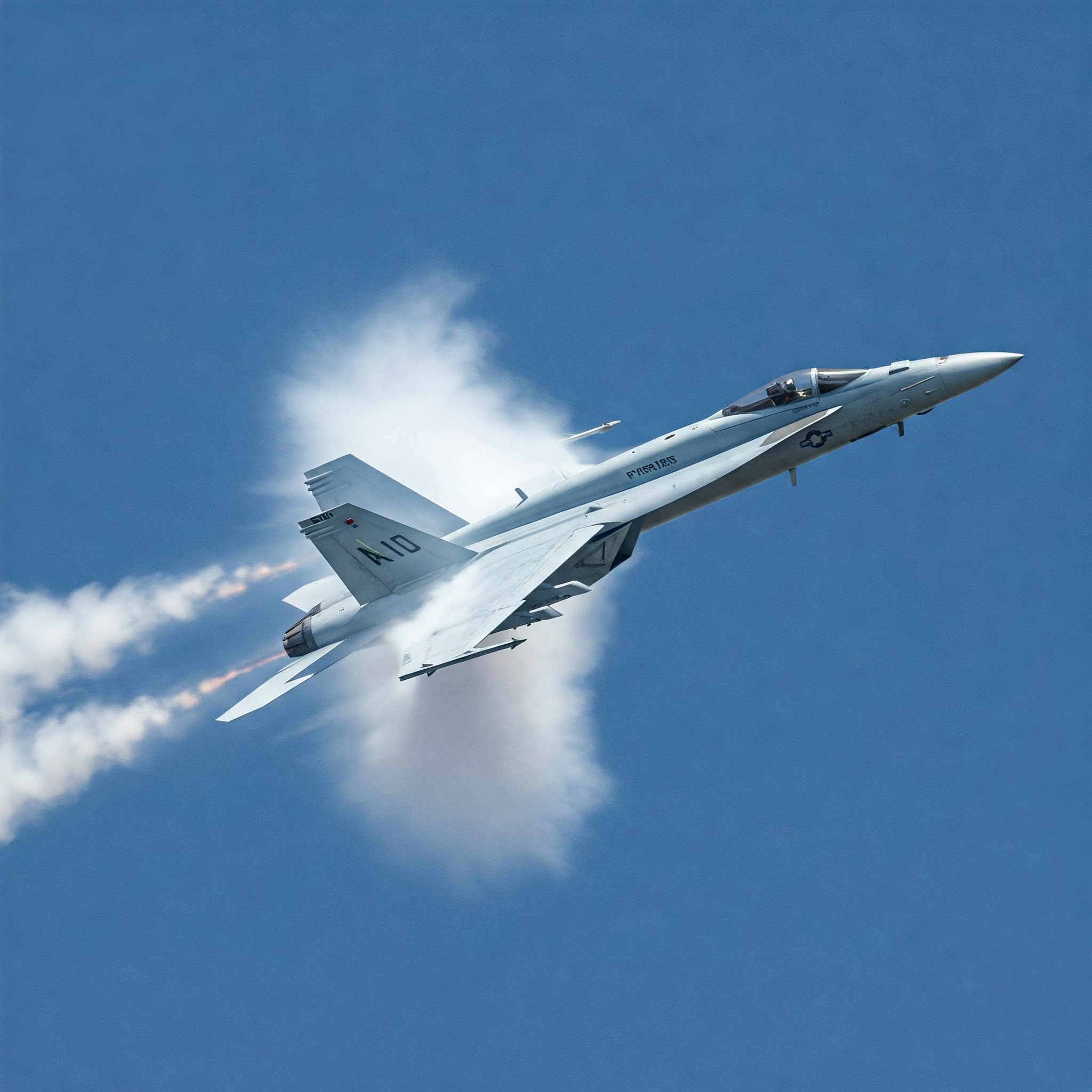Mach number formula
|
|
\( Ma \;=\; \dfrac{ v }{ a } \) (Mach Number)
\( v \;=\; Ma \cdot a \)
\( a \;=\; \dfrac{ v }{ Ma } \)
|
| Symbol |
English |
Metric |
| \( Ma \) = Mach Number |
\(dimensionless\) |
\(dimensionless\) |
| \( v \) = Velocity (Speed of Object) |
\(ft \;/\; sec\) |
\(m \;/\; s\) |
| \( a \) = Speed of Sound |
\(ft \;/\; sec\) |
\(m \;/\; s\) |

Mach number, abbreviated as Ma or M, a dimensionless number, is the ratio of the velocity of flow to the velocity of sound. The speed of sound in this equation is dependent on the density of the medium that the sound is traveling through. For example, the speed of sound through a solid object like a railroad track is much faster than the speed of sound through air at standard conditions. The Mach number provides a measure of how fast an object is traveling compared to the speed at which pressure waves (sound waves) propagate through the medium. It is often used in aerodynamics, aerospace engineering, and fluid dynamics to characterize the flow behavior and compressibility effects.
Mach Number Conversion
|
| Multiply |
By |
To Get |
| |
9.646x107 |
feet per day |
| |
4.0192x105 |
feet per hour |
| |
66,986 |
feet per minute, fpm |
| |
1,116 |
feet per second, fps |
| |
1,225 |
kilometers per hour |
| |
2.94x107 |
meters per day |
| |
1.225x106 |
meters per hour |
| |
20,417 |
meters per minute |
| |
340.29 |
meters per second |
| |
761 |
miles per hour, mph |
Mach Number Categorizes into Different Regimes based on the Object's Speed Relative to the Speed of Sound
Subsonic (Ma < 1) - The object is traveling at a speed slower than the speed of sound. Subsonic flows are characterized by smooth, continuous airflow around the object.
Transonic (0.8 < Ma < 1.2) - Transonic flows involve speeds close to the speed of sound. As the object moves through the air, some parts of it may experience supersonic flow, while others remain subsonic.
Supersonic (Ma > 1) - In this regime, the object is traveling at a speed faster than the speed of sound. Supersonic flows often result in shock waves forming around the object.
Hypersonic (Ma > 5) - Hypersonic flows involve extremely high speeds, several times the speed of sound. At these speeds, the behavior of the flow becomes complex, with significant aerodynamic heating and other effects.
Mach 1 (Ma = 1) - At Mach 1, the object is traveling at the speed of sound. This is the boundary between subsonic and supersonic flow.
The Mach number has significant implications for the aerodynamic behavior of objects and the formation of shock waves, which occur when an object moves faster than the speed of sound. Understanding and accounting for the Mach number is critical in designing aircraft, rockets, and other high speed vehicles, as well as in the analysis of fluid flows in
pipes and channels.



